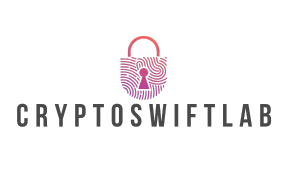Table of Contents
ToggleIn a world where cyber threats lurk around every digital corner, understanding cybersecurity software is like having a superhero cape for your devices. Imagine your computer as a fortress, and cybersecurity software as the trusty guards ensuring no unwanted guests sneak in. With hackers getting craftier by the day, it’s crucial to know what these software solutions offer and how they protect against those pesky cyber villains.
But let’s face it, not all cybersecurity software is created equal. Some are like that overzealous bouncer at a club, while others are more like a friendly neighborhood watch. Whether it’s antivirus protection, firewalls, or encryption tools, each plays a vital role in keeping your online life secure. Dive in to discover the ins and outs of cybersecurity software and why it’s essential for anyone who values their digital safety.
Understanding Cybersecurity Software
Cybersecurity software plays a vital role in defending digital assets. It forms a protective barrier against various types of cyber threats.
Definition of Cybersecurity Software
Cybersecurity software refers to tools designed to protect computer systems, networks, and data from unauthorized access. Such software includes antivirus programs, firewalls, and intrusion detection systems. Each type serves a specific purpose, working together to enhance security comprehensively. Antivirus programs scan for and eliminate malicious software. Firewalls monitor incoming and outgoing network traffic, establishing a controlled environment. Intrusion detection systems alert users to suspicious activities, ensuring timely responses.
Importance of Cybersecurity Software
Cybersecurity software is indispensable for maintaining online safety. Malware attacks, ransomware incidents, and identity theft rates continue to rise, demonstrating the need for effective solutions. With over 60% of small businesses experiencing cyberattacks annually, robust protection becomes critical. Cybersecurity software mitigates risks, safeguarding sensitive information and maintaining user trust. Furthermore, compliance with data protection regulations often necessitates the implementation of such software. Staying protected against evolving threats helps ensure operational continuity.
Types of Cybersecurity Software
Cybersecurity software encompasses various tools that protect devices from cyber threats. Each type serves a distinct role in maintaining security.
Antivirus Software
Antivirus software scans and removes malware, protecting against viruses, worms, and Trojans. Typically, it runs in the background, providing real-time protection and regular updates to detect new threats. Programs include well-known names like Norton, McAfee, and Bitdefender. Modern antivirus solutions also offer additional features such as phishing protection and firewall integration. With over 60% of small businesses facing cyberattacks annually, implementing robust antivirus software is essential for safeguarding sensitive information.
Firewall Software
Firewall software acts as a barrier between a trusted internal network and untrusted external networks. It monitors incoming and outgoing traffic, blocking unauthorized access while allowing legitimate communication. Different types of firewalls include network-based and host-based. Examples of firewall software include ZoneAlarm and Windows Defender Firewall. A properly configured firewall significantly reduces the risk of attacks, enhancing overall cybersecurity posture. For small businesses, using reliable firewall solutions is critical for ensuring compliance with data protection regulations.
Intrusion Detection Systems
Intrusion Detection Systems (IDS) monitor network traffic for suspicious activities and potential threats. These systems analyze patterns to identify unauthorized access attempts and alert administrators. IDS can be classified into network-based or host-based systems. Popular solutions include Snort and OSSEC. Customizable alerts and detailed reporting capabilities assist in quickly addressing security incidents. Overall, deploying an IDS strengthens the defense against increasingly sophisticated cyber threats, ensuring better protection for all data assets.
Key Features of Cybersecurity Software
Cybersecurity software provides essential features for maintaining digital safety. Understanding these features helps businesses select appropriate solutions.
Threat Detection and Response
Threat detection identifies security vulnerabilities in real-time. Cybersecurity software employs algorithms to monitor network activity, flagging suspicious behavior. Immediate alerts enable quick response to potential threats. For instance, if a data breach occurs, the software can trigger automated defenses to contain the incident. Effective threat response mitigates damage and safeguards sensitive information.
User Authentication
User authentication ensures that only authorized personnel access system resources. Cybersecurity software implements multi-factor authentication, increasing security by requiring multiple forms of verification. Utilizing biometric data or security tokens strengthens user identity verification. Regular audits of access logs help track unauthorized attempts, enhancing accountability. Secure user authentication minimizes risk from internal and external threats.
Data Encryption
Data encryption protects sensitive information from unauthorized access. This feature converts data into unreadable formats, ensuring its confidentiality during transmission. Cybersecurity software employs strong encryption protocols to secure files on servers and in transit. Encryption at rest and in transit provides comprehensive security for data storage. By safeguarding sensitive information, businesses comply with regulations like GDPR and HIPAA.
Choosing the Right Cybersecurity Software
Choosing the right cybersecurity software involves understanding specific needs and available budget. Assessing these factors ensures effective protection against cyber threats.
Assessing Your Needs
Evaluating security requirements begins with identifying critical assets. Determine whether the priority lies in data protection, network security, or endpoint security. An organization might require a comprehensive solution encompassing antivirus, firewalls, and intrusion detection systems. Examining the potential impact of threats helps define necessary software features. Frequent access to sensitive data demands robust encryption and user authentication measures. Cybersecurity software should be scalable to accommodate organizational growth. Thus, understanding unique vulnerabilities informs software selection strategies.
Budget Considerations
Setting a budget for cybersecurity solutions starts with evaluating total costs. Consider factors such as licensing fees, installation, and ongoing maintenance expenses. Allocating funds requires prioritizing features that align with organizational needs. Small businesses might find value in all-in-one packages offering various tools at a lower price. Investing in quality software often reduces costs related to incidents, such as breaches and downtime. Balancing quality and affordability remains essential in decision-making. Seek vendors that provide flexible pricing models tailored to varying budgets.
Investing in cybersecurity software is essential for anyone looking to protect their digital assets. With the increasing prevalence of cyber threats it’s crucial to choose the right tools that fit specific needs. From antivirus programs to firewalls and intrusion detection systems each type of software plays a vital role in maintaining security.
Organizations must assess their requirements and budget to find comprehensive solutions that offer robust protection without breaking the bank. By prioritizing features that address their unique vulnerabilities businesses can significantly enhance their defenses against potential attacks. Ultimately the right cybersecurity software not only safeguards sensitive information but also fosters trust and compliance in an increasingly digital world.







